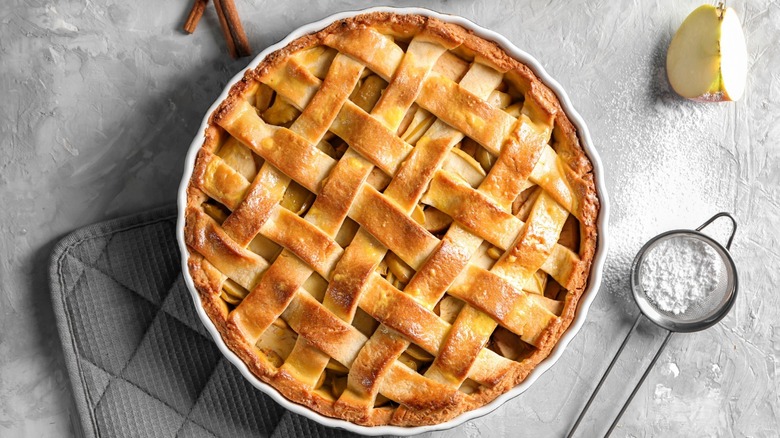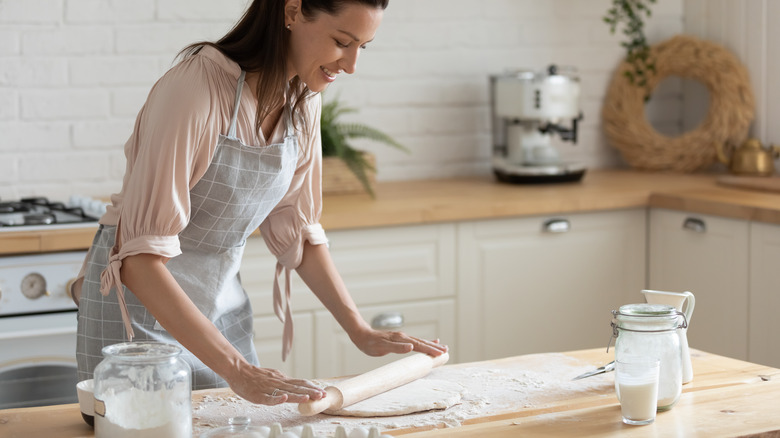The 50-Cent Trick To Get Pie Crust Thickness Just Right
In theory, making a pie doesn't seem too difficult. After all, you just need to master two components — the filling and the crust. However, there's a reason that in 2020 alone, a staggering 56.54 million Americans used some type of frozen pastry or pie shells in their culinary endeavors, according to the Simmons National Consumer Survey and United States Census data (via Statista). It isn't easy to make the perfect pie crust. There are a lot of mistakes people make when cooking pies. Perhaps your crust ingredients aren't adequately chilled, or maybe you've overworked the dough in your attempt to get it to the right consistency. Or, maybe you didn't quite get it the right thickness, and as a result the final product just isn't what you hoped.
Most pies are a delicate balance of filling and crust — and you want to get the ratio correct. If your crust is too thick, there's a good chance it won't cook all the way through before it begins to brown too much. Alternatively, a too-thin pie crust is prone to rips and tears, allowing the filling to seep out and turning your pie into a bit of a mess.
So, how exactly do you know when you've rolled out your pie crust to the exact thickness needed? There's a very simple trick, and it doesn't require any specialized kitchen equipment — although you might have to grab your wallet to get the necessary tools.
Grab two quarters from your coin jar to measure
The general rule of thumb is that your pie crust should be about ⅛ of an inch thick, and approximately 2 or 3 inches larger than whatever size pie you're looking to make. The latter is important so you don't end up without enough dough to cover the sides of your pie plate, and the former ensures you'll have a golden-brown crust with a deliciously flaky texture.
However, it isn't easy to estimate what ⅛ of an inch looks like, and erring too far on either side of the measurement will jeopardize the quality of your pie. Instead of trying to find a ruler for the task, though, just get two quarters to place on your countertop or wherever you're rolling out your dough. When they're stacked atop one another, the coin stack measures right around ⅛ of an inch. So, all you need to do is make sure your pie crust thickness matches the height of the quarters and you should be all set for whatever pie you're whipping up.
If you don't love the idea of placing coins so close to the pie dough you're going to eventually eat, there is another readily available measuring tool you may want to consider trying. 28 sheets of regular computer paper stacked atop one another are likewise approximately ⅛ of an inch, so you could roll out your pie crust alongside a stack of paper to determine the correct thickness as well.

